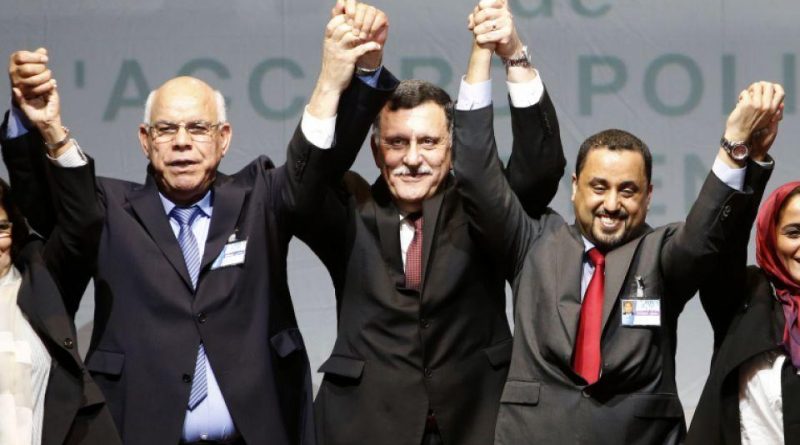Libya After Gaddafi
The Death of Africa’s Most Vicious Leader Brings Opportunities… And Chaos
Profile: Libya
- Location: Northern Africa
- Primary resource: petroleum
- Population: 6.4 million
- Area: 1.77 million km2
- Currency: Libyan dinar
Who is Gaddafi?
For forty-two years, all of Libya’s power and wealth lay in the grasp of Col Muammar Gaddafi. As the longest-ruling leader in Africa and the Arab world, Gaddafi had a pan-Arab, anti-imperialist philosophy mixed with Islamic aspects. He used force and brutality to maintain power, and his rule was known as a military dictatorship. In 1970, for instance, he ordered marching and demonstrating students to be publicly hanged. He was also infamously blamed for the 1988 bombing of the Pam Am flight over Lockerbie, Scotland. Though he first claimed to be innocent, he eventually accepted responsibility, gave compensation to affected families, and promised to abandon plans for weapons of mass destruction. This let Libya gain international acceptance, which boosted the growth of the oil industry, and by consequence, their economy.
When the Arab Spring began in Tunisia, the oppressed Libyan population followed suit. The Libyan revolution began with a peaceful protest against Gaddafi’s tyranny that spread quickly to other cities. Gaddafi reacted with military force, ordering his armies to shoot at the demonstrators. As the revolution intensified and escalated into a civil war, NATO-led forces joined to give the rebels the necessary support to match their powers to Gaddafi’s forces. Some believe NATO’s intervention was motivated purely by Libya’s natural resources. Regardless, the rebels were eventually able to capture and kill Gaddafi, and three days later, the rising opposition government group announced Libya’s liberation.
A Divided Country
Yet the celebrations did not last. Gaddafi’s downfall meant a chance for democracy, transparent institutions, and a new unified state. However, the lack of consensus of what new discourse to adopt led to the threat of disintegration instead. The east and west have been divided, with two parallel armies and police. The lack of a unified security structure has resulted in greater vulnerability to ISIL, which already has full control of the city Sirte. There have been attempts to separate the three most important economic institutions: the Central Bank, the National Oil Corporation, and the Libyan Investment Authority.
The Government of National Accord
Amidst the conflict, the UN has helped form the Government of National Accord led by Fayez Sarraj with the goal of uniting the country. An agreement (or compromise) between the two opposing political groups has handed over most political power to the GNA. Now it must tackle security, socioeconomic conditions, and the re-building of stable institutions. It aims to reunite the economic institutions to reverse institutional disintegration, build consensus between the opposing groups until permanent elections are in place, and incorporate militias into a national army for better protection against ISIL and ISIS. Meanwhile, effort would also be put on increasing the production and export of oil. This would increase national income, resulting in more bank reserves, the strengthening of the Libyan dinar, and the reversal of inflation on everyday commodities.
Current Situation
At present, there are three centres of power in Libya: the GNA, the rival Government of National Salvation, and the authorities of Tobruk and Bayda, for which the House of Representatives in Tobruk hold the most power. Rival militias are still fighting in various parts of the country.
A minority of Libyans want the country to be separated into east and west. However, most want the return of a federal political system. Some even claim that Libya were better under Gaddafi’s rule, because at least there had been security against ISIL.
Many Libyans are migrating to or seeking asylum in Europe. In addition, Libya’s geographical location has turned it into a gateway to Europe for other countries as well. Migrants from all over Africa and the Middle East are surging to Libya in hopes of taking the final leap, so to speak, across the Mediterranean.
However, Europe has a “stop the boat” policy. As Gaddafi himself once stated, “Europe runs the risk of turning black from illegal immigration. It could turn into Africa.” EU-backed Libyan coastguards are keeping a close eye on the borders, catching those attempting to escape and sending them back to Libya to be kept indefinitely in detention centres, where there are reports of abuse and starvation. Provisional figures provided by the Italian Institute for International Political Studies in October 2018 said that 20% of Libyans travelling by sea died or disappeared in September. 70% were caught and returned by coastguards, and a mere 10% made it to Europe.
As conflict persists in the Northern African country, the GNA offers potential for a brighter future. Yet only time can tell if this potential will be fulfilled.
Bibliography
“A Quick Guide to Libya’s Main Players.” European Council on Foreign Relations, www.ecfr.eu/mena/mapping_libya_conflict.
Al Jazeera. “Profile: Muammar Gaddafi.” GCC News | Al Jazeera, Al Jazeera, 22 Aug. 2011, www.aljazeera.com/indepth/2011/02/201122117565923629.html.
El-Gamaty, Guma. “Libya: Gaddafi Left behind a Long, Damaging Legacy.” GCC News | Al Jazeera, Al Jazeera, 17 Feb. 2016, www.aljazeera.com/news/2016/02/libya-gaddafi-left-long-damaging-legacy-160216072812492.html.
El-Gamaty, Guma. “Libya: The Story of the Conflict Explained.” GCC News | Al Jazeera, Al Jazeera, 27 Apr. 2016, www.aljazeera.com/news/2016/04/libya-story-conflict-explained-160426105007488.html.
Hayden, Sally. “Libya Is a War Zone. Why Is the EU Still Sending Refugees Back There? | Sally Hayden.” The Guardian, Guardian News and Media, 4 Oct. 2018, www.theguardian.com/commentisfree/2018/oct/04/libya-war-zone-eu-refugees-tripoli-fighting.
“Libya Country Profile.” BBC News, BBC, 3 Sept. 2018, www.bbc.com/news/world-africa-13754897.
“Libya Profile – Timeline.” BBC News, BBC, 3 Sept. 2018, www.bbc.com/news/world-africa-13755445.
Stephen, Chris. “Libya’s Arab Spring: the Revolution That Ate Its Children.” The Guardian, Guardian News and Media, 16 Feb. 2015, www.theguardian.com/world/2015/feb/16/libyas-arab-spring-the-revolution-that-ate-its-children.

